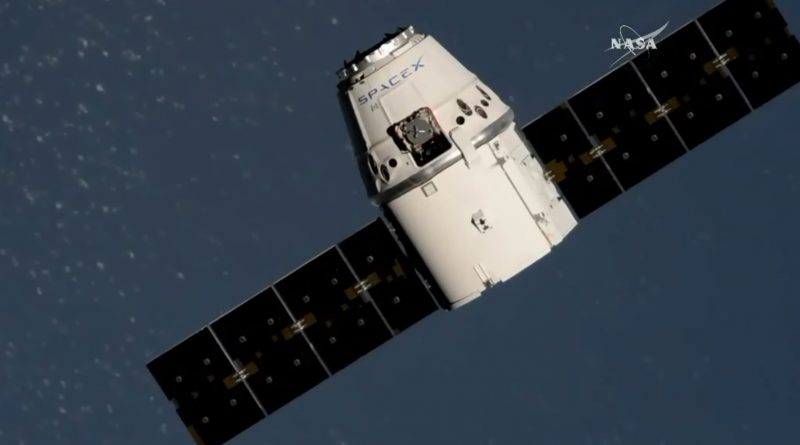First Re-Used Dragon Arrives at Space Station with Critical Science-Enabling Cargo
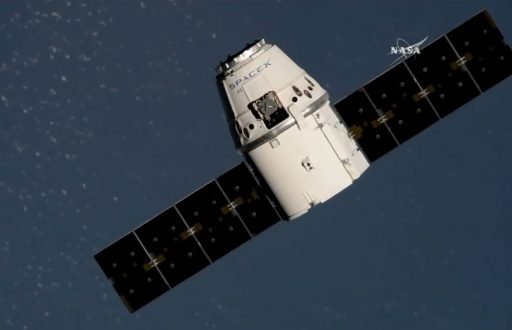
A busy period of traffic wrapped up at the International Space Station on Monday with the successful capture of the SpaceX Dragon SpX-11 spacecraft, marking that craft’s second arrival at the orbiting laboratory as the first re-used Dragon following up on a visit in 2014 with the delivery of a second batch of cargo.
The Dragon is hauling 2,700 Kilograms of cargo to the Space Station including three high-profile payloads riding in the trunk section to peer deep into the universe to study the interior or ultra-dense neutron stars, test out a new type of solar array that could satisfy the demand of power-hungry satellites of the future, and give ISS a new articulated external mounting platform for Earth science instruments.
Hitching a ride inside the Dragon are 40 mice and up to 6,000 fruit flies – the former participating in a potential groundbreaking drug study that promises to reverse bone loss incurred in space and in Osteoporosis patients on Earth while the flies act as model organisms to reveal the mechanisms that causes deterioration of heart function during prolonged space flight.
>>Dragon SpX-11 Cargo Overview
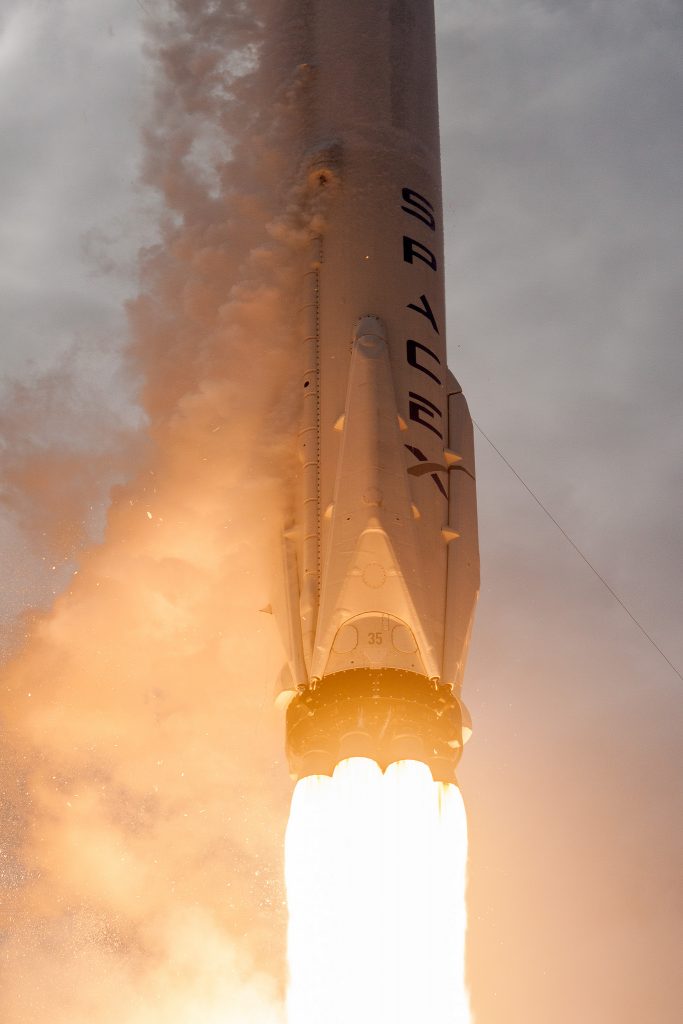
The comings and goings at the International Space Station have been particularly busy over the last four days, starting with Friday’s departure of Expedition 50/51 crew members Oleg Novitskiy and Thomas Pesquet who returned to Earth after a 196-day flight with a safe parachute-and-rocket-assisted landing aboard their Soyuz. On Saturday, the remaining two U.S. Segment crew members, Peggy Whitson and Jack Fischer, buttoned up the Cygnus OA-7 spacecraft for departure on Sunday, being sent on a week-long free flight supporting experiments and satellite deployments.
The eleventh operational Dragon spacecraft lifted off on Saturday at 21:07 UTC from LC-39A at Florida’s Kennedy Space Center atop a Falcon 9 rocket, marking the facility’s 100th launch after supporting NASA’s Saturn V moon rocket, the Space Shuttle and now in use for SpaceX missions. Dragon received a very smooth ride into orbit via a 2.5-minute burn of the first stage followed by close to seven minutes on the MVac-powered second stage.
Dragon was still blazing toward orbit when the rocket’s first stage made a triumphant return to Cape Canaveral, marking the fifth land-based landing. Booster #1035 set a new record time for the round-trip to the edge of space, landing seven minutes and 41 seconds after liftoff to be available for a future re-use mission, possibly as early as this fall.
The Dragon was set free just over ten minutes after liftoff, reaching an initial orbit of 204 by 354 Kilometers according to tracking data released Saturday night. Within two minutes of spacecraft separation, Dragon jettisoned two solar array covers and unfolded its two power-generating arrays. Dragon, the Falcon 9 second stage and the two solar array covers put on a spectacular display over Europe around 20 minutes after launch as the four brightly-illuminated objects streaked across the night skies.
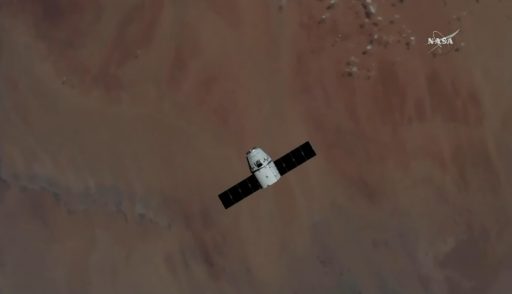
Embarking on its first laps around the Earth, Dragon was put through its paces by the Mission Control Team on station at SpaceX HQ in Hawthorne, California to ensure all systems were operational after the craft’s ride into orbit aboard Falcon 9. The GNC Bay Door deployed two and a half hours after launch, marking a critical prerequisite to the craft’s arrival at ISS as the GNC compartment houses the primary navigation gear of the Dragon as well as the grapple fixture required by the robotic arm to obtain a firm hold of the spacecraft.
Completing a 27-orbit rendezvous with the Space Station, Dragon executed a major Coelliptic Burn to circularize its orbit on Sunday, continuing to approach the Station from behind and below. Another burn pair on Sunday, spaced by half an orbit, placed the Dragon into an orbit ten Kilometers below the Station’s current 402 by 408-Kilometer orbit.

The next Height-Adjust/Coelliptic Burn Pair placed the Dragon into an orbit 2.5km below that of ISS and the craft continued catching up, entering the 28-Kilometer communications zone before 10 UTC on Monday to begin relative navigation which requires a space-to-space radio link between ISS and Dragon to enable the exchange of GPS navigation data.
The HA/CE-3 burn pair placed Dragon 1,400 meters below the Space Station, still closing in from behind and heading toward its Approach Initiation point with a pair of course corrections on the way. Approach initiation, confirmed by Mission Control, occurred at 11:15 UTC via a 0.3-meter per second impulse that transitioned Dragon on path to arrive directly below the complex.
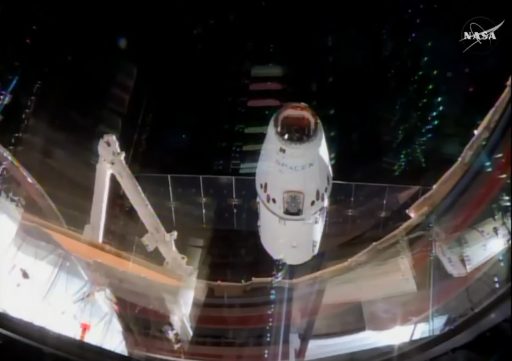
Acquisition of the R-Bar, the imaginary line connecting ISS and the center of the Earth, occurred just after 12 UTC at a distance of 350 meters. Dragon then entered a brief holding pattern dedicated to a 180-degree yaw maneuver to properly position the grapple fixture for capture and point the thrusters to the proper direction for a possible abort maneuver.
The Dragon advanced another 100 meters and came to a stop at the next pre-planned hold at 250 meters dedicated to the transition from relative GPS to the Proximity Navigation System featuring a LIDAR that bounces laser beams off reflectors on ISS for range and rate measurements and a thermal imager that captures the relative geometry between ISS and Dragon. With no issues present, Mission Controllers in Houston and at MCC-X gave a GO for an early hold departure.
The straight-up approach along the R-Bar took 24 minutes until Dragon paused again at 30 meters, providing teams on the ground time for a final systems check while Peggy Whitson and Jack Fischer re-positioned the robotic arm for the capture maneuver.
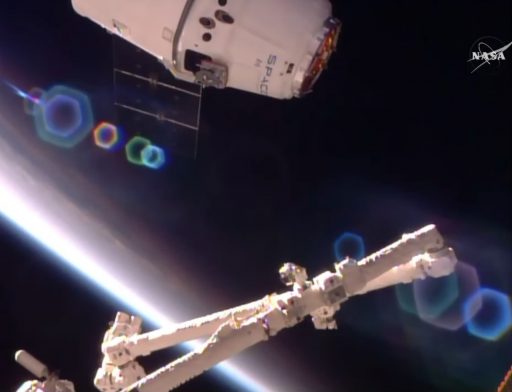
Dragon continued to be well behaved and received the command for final approach at 13:19 UTC, gently pulsing its Draco thrusters to initiate a small closing rate to cover the last 20 meters to the capture point at a distance of only ten meters to the Station’s modules.
Once arriving at the capture point at 13:38 UTC, Dragon zeroed out any relative rates between itself and the Space Station. The crew was given a GO for capture when proper lighting conditions were available and then worked through releasing the brakes on the robotic arm and commanding Dragon into Free Drift.
At the robotic controls, Jack Fischer aligned the arm with Dragon’s grapple fixture and moved in for the capture, taking a little longer than usual for snares to close within the arm’s Latching End Effector to confirm a secure grasp of the Dragon vehicle. Capture was confirmed at 13:52 UTC while ISS and Dragon were flying 400 Kilometers over the South Atlantic Ocean just off the coast of Argentina.
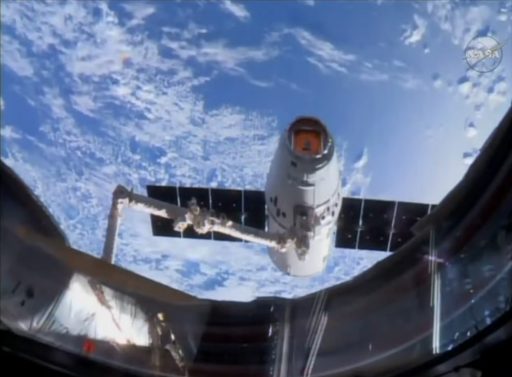
With Dragon successfully tamed at the end of Canadarm2, Jack Fischer congratulated all teams on the ground and pointed out the significance of the Dragon SpX-11 mission as the first re-flight of a SpaceX cargo vehicle and the first time since July 2011 that a previously flown spacecraft arrived at the International Space Station following the retirement of NASA’s Space Shuttle.
With Dragon in tow, the 18-meter robotic arm headed into post-capture safing as the crew handed robotic duties off to Mission Control for the multi-hour berthing operation. Initial post-capture steps by SpaceX included safing Dragon’s propulsion system and rotating the solar arrays for the docked mission before ROBO controllers maneuver the arm into the predicted capture position from where pre-programmed command sequences are available for the move toward the Harmony module.
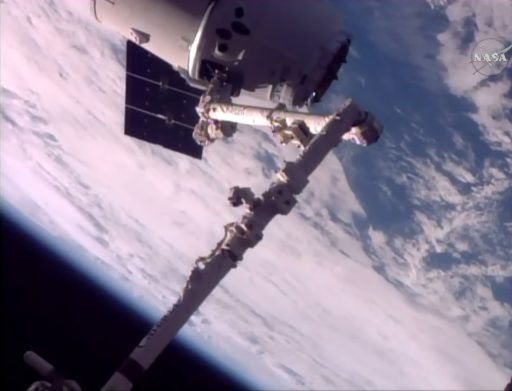
Once swung around to the underside of Harmony, Dragon will be positioned at a standoff distance for a video survey of the three rubber seals in its berthing mechanism to visually confirm their integrity. The craft will then be moved into pre-berthing as ROBO controllers use the Centerline Berthing Camera System to position Dragon with millimeter-accuracy to obtain four green Ready-to-Latch Indicators.
Four capture latches will close to achieve First Stage Capture after which the robotic arm will move into what is known as Limp-Mode to give Dragon some wiggle room to be pulled in when bolts within the Common Berthing Mechanism engage. Sixteen bolts will be driven in four gangs of four to tightly pull the Common Berthing Interfaces together and form a pressure tight seal.
Hatch opening, not on the crew’s timeline until Tuesday, could occur late on Monday should the crew opt for some over time and would begin with a leak check of the berthing interface before the Harmony hatch can be opened. Accessing the vestibule between ISS and Dragon, the crew will remove four Control Panel Assemblies used to drive the CBM bolts and then put in place power and data jumpers to hook Dragon up to ISS power supply and data systems.
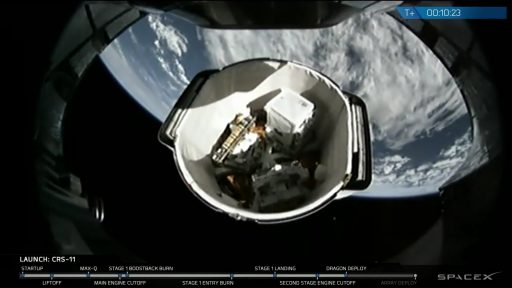
Hatch opening on the Dragon will be preceded by pressure equalization and the crew donning protective gear to ensure floating debris, if present inside the vehicle, can not harm the ingressing crew members.
The Dragon SpX-11 spacecraft is booked for a stay of four weeks, currently targeting departure and landing on July 2, giving the crew all hands full to move cargo from Dragon to ISS and complete various experiments that need to ride back to Earth aboard the Dragon. On the outside of ISS, the Station’s robots will be busy with the three external payloads delivered by Dragon.
Bolted into the Dragon Trunk is NICER, the Neutron Star Interior Composition Explorer set for cutting edge observations of the densest stars in the universe to probe their interior structure and assess their potential as space-based navigation sources. MUSES, the Multiple User System for Earth Sensing, will take up residence on the Station’s truss to provide an actuated Earth-pointing platform for up to four remote sensing instruments.
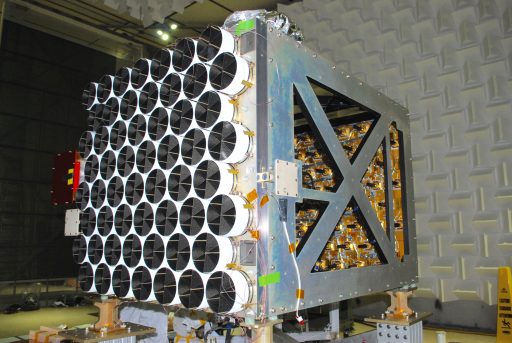
ROSA, the third Trunk Payload, will demonstrate a roll-out solar array designed to satisfy the power-hungry satellites of the future and power craft headed deep into the solar system. The Roll-Out Solar Array will complete a one-week test to demonstrate its solar-thermal deployment and power characteristics in the space environment – retiring technical risk for future missions adopting this new technology.
In addition to 1,056 Kilograms of science experiment hardware, Dragon is also lifting 199kg of maintenance hardware for the various ISS systems, 242kg of crew supplies including food and hygiene articles, 27kg of computer resources and 56kg of spacewalk equipment.

